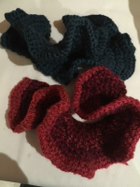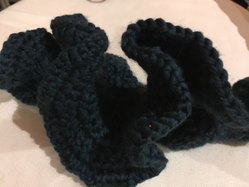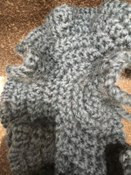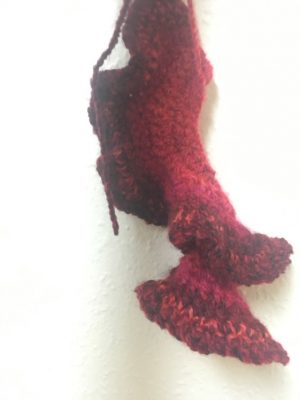Mathematical shapes extraordinaire!
Mrs Bennet, Head of Mathematics, has taken cross-curricular activity to its extreme with her Hyperbolic Crochet Club. A combination of mathematical and crocheting skills, this club reach the parts of mathematics and handicrafts that no other club can reach! Mrs Bennet reports,
‘Since the launch of the Hyperbolic Crochet Club in September there has been a steady stream of pupils venturing to join us to discover what crochet, and in particular hyperbolic crochet, is all about.
Crochet is not related to croquet and thoughts that it might involve mallets and hoops are unfounded.
Nor is it related to the musical crotchet – no minims, crotchets or quavers here!
Crochet is a craft, like knitting, but using just one small hook rather than two needles. Wool is looped in a series of stitches called, rather unimaginatively, single crochet or double crochet.
And finally that word ‘hyperbolic’ – what is that all about? It does not refer to hyperbole, referred to frequently by the English Department, meaning an extravagant or obvious exaggeration. Instead it relates to the mathematical term hyperbola, which is one of the ‘conic sections’ formed when a flat plane intersects a cone. The other conic sections are the circle, ellipse and parabola.


Hyperbolic crochet in action!
Hyperbolic geometry was introduced to Lower V last year in no-paper day. Hyperbolic geometry simply cannot be demonstrated on a flat (Euclidean) surface and so no-paper day seemed like an ideal opportunity for this. Spherical geometry is easier to visualise and in the same way that we cannot draw spherical surfaces on flat paper (even though Geographers try valiantly with their maps!), we cannot draw hyperbolic planes on flat paper either.
So why use crochet and who came up with the idea?
Daina Taimina, a Professor at Cornell University, hit upon the idea of crocheting a hyperbolic plane after seeing the fragile multi-piece paper models constructed by various mathematicians to demonstrate the concept. Her initial lecture and other presentations sparked great interest world-wide in this tactile way of exploring geometry. It has certainly sparked an interest in our pupils too.


More hyperbolic shapes
At the moment we are mastering the basic stitches and experimenting with wool thickness and hook size. One of my A Level students who is applying for medicine remarked recently that university interviews at medical school quite often ask how you can demonstrate manual dexterity of the type required for surgery – she now has a superb answer ready and waiting!
Once stitch technique is learnt, the way in which stitches are increased in regular pattern, and what this does to the ‘flatness’ of the textile created, can be explored.’
Categories: Senior Sixth Form Whole School



